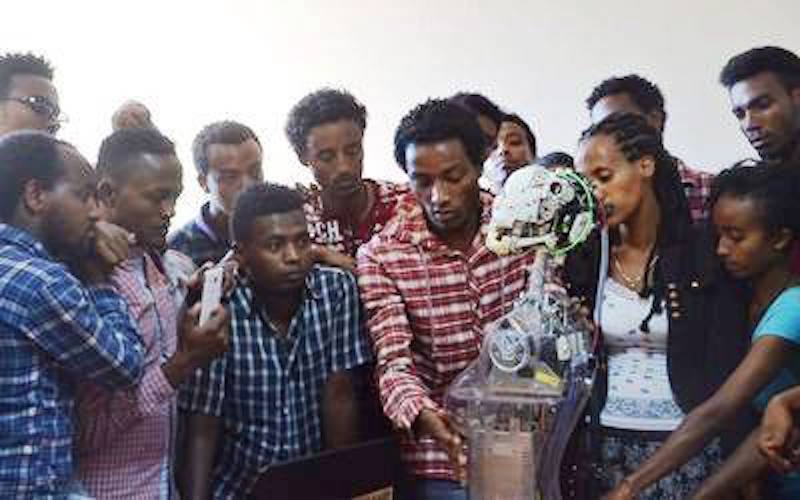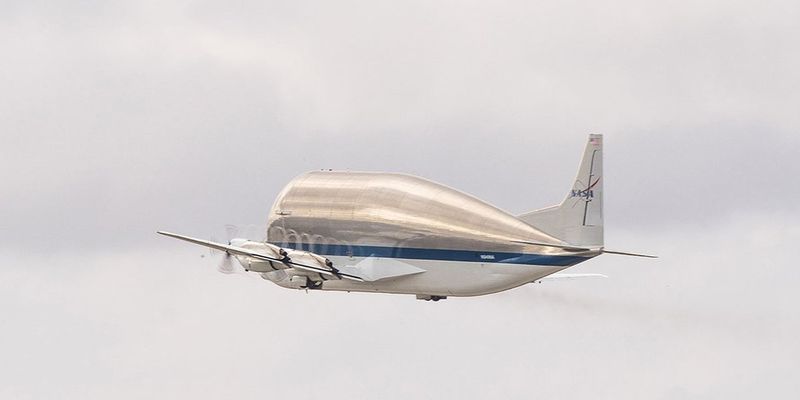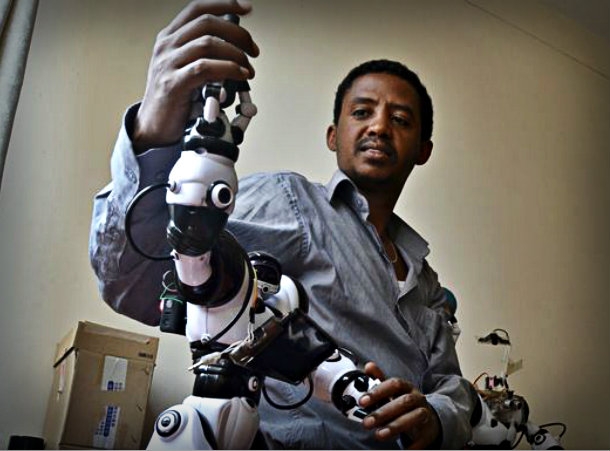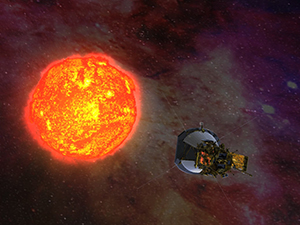Ethiopia quietly makes strides in robotics to improve lives
 The black-and-white robot stopped and its eyes suddenly lit up. Rotating 90 degrees, it recognised the blue plastic ball a few centimetres away, came forward and kicked it.
The black-and-white robot stopped and its eyes suddenly lit up. Rotating 90 degrees, it recognised the blue plastic ball a few centimetres away, came forward and kicked it.
"The robot is Chinese, but the processor is made in Ethiopia," Getnet Aseffa explains. "A student developed it, and within a few months we will organise the first national football competition between robots, in the same vein as the International RoboCup tournament."
Welcome to the iCog Labs experiment room in the heart of Addis Ababa's university district. Getnet, 28, is one of the brains behind the operation.
After graduating in computer science in 2012, he co-created iCog with the help of US researcher Ben Goertzel.
It is the first Ethiopian research and development laboratory specialising in artificial intelligence.
"Our programmers have the same skills as Chinese, Americans and Europeans," Getnet says. "The only difference is the economic gap and the daily challenges we face."
Among them are lack of infrastructure, erratic internet access and frequent power cuts.
Getnet is convinced cutting-edge technology can be a development tool for his country.
Ethiopia has invested €87m in the technology park Ethio ICT Village and does not hide its ambition to become a centre of excellence for scientific and technological research.
The government has even imposed quotas: 70 per cent of students are required to take a course in hard sciences. Some of them may be part of the first promotion of the master's degree in artificial intelligence that will soon open at the University of Addis Ababa.
"Now my goal is to bring robotics to elementary school," Getnet says, giving a plastic ball to the robot.
"To develop our country, it's necessary that children learn the basics of programming from an early age."
Read more »


